
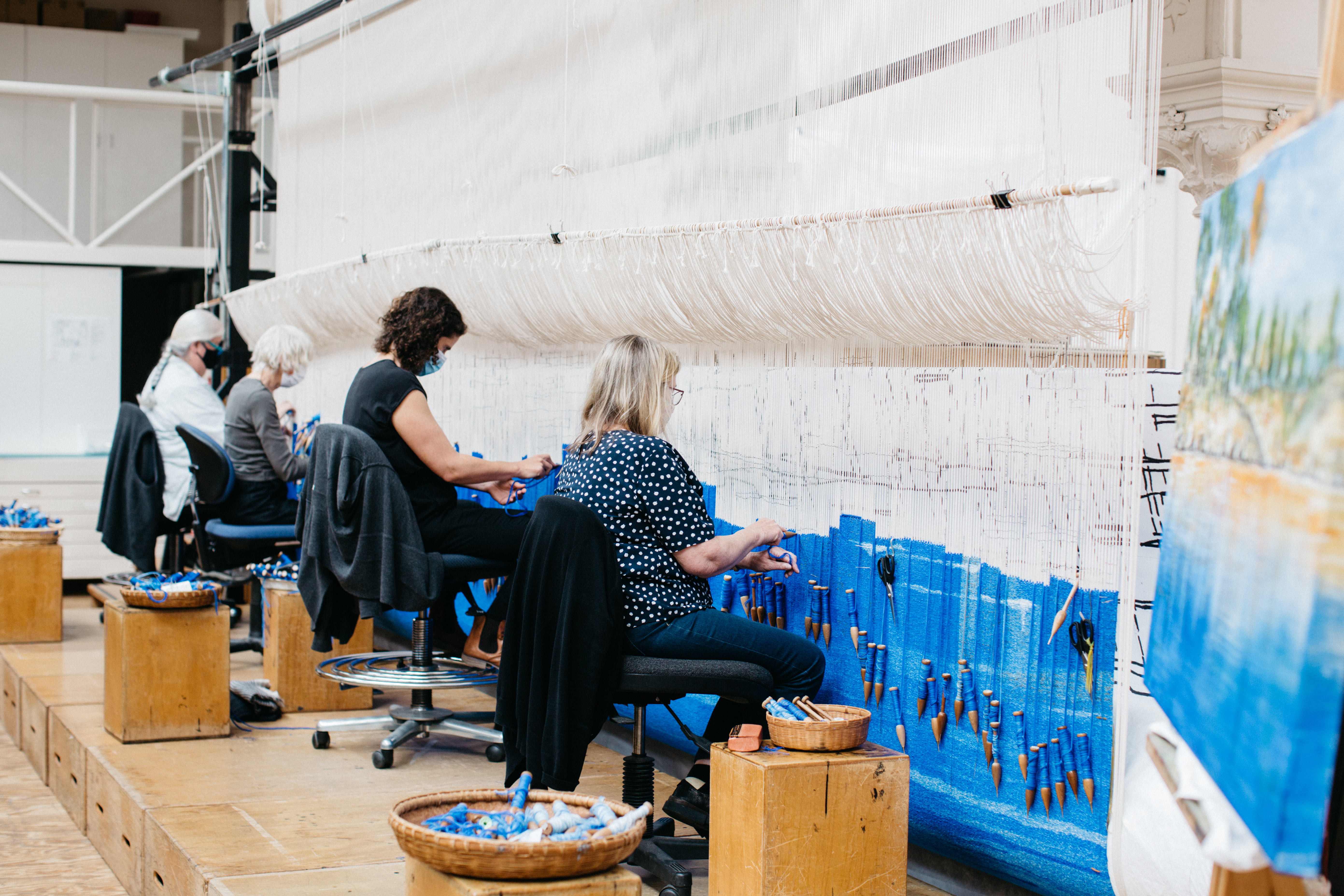

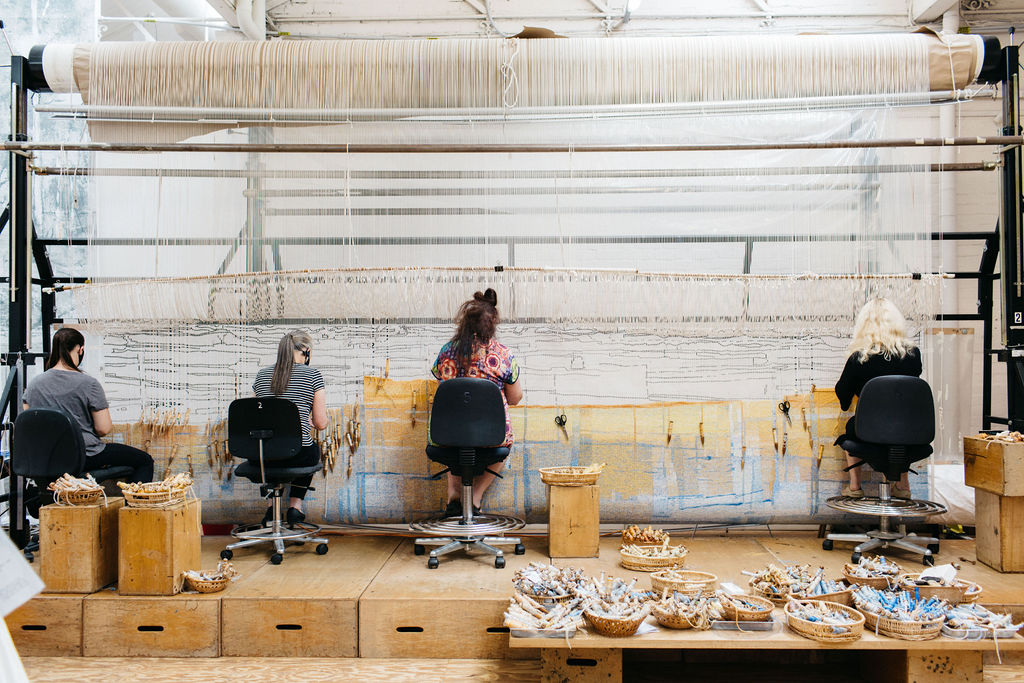
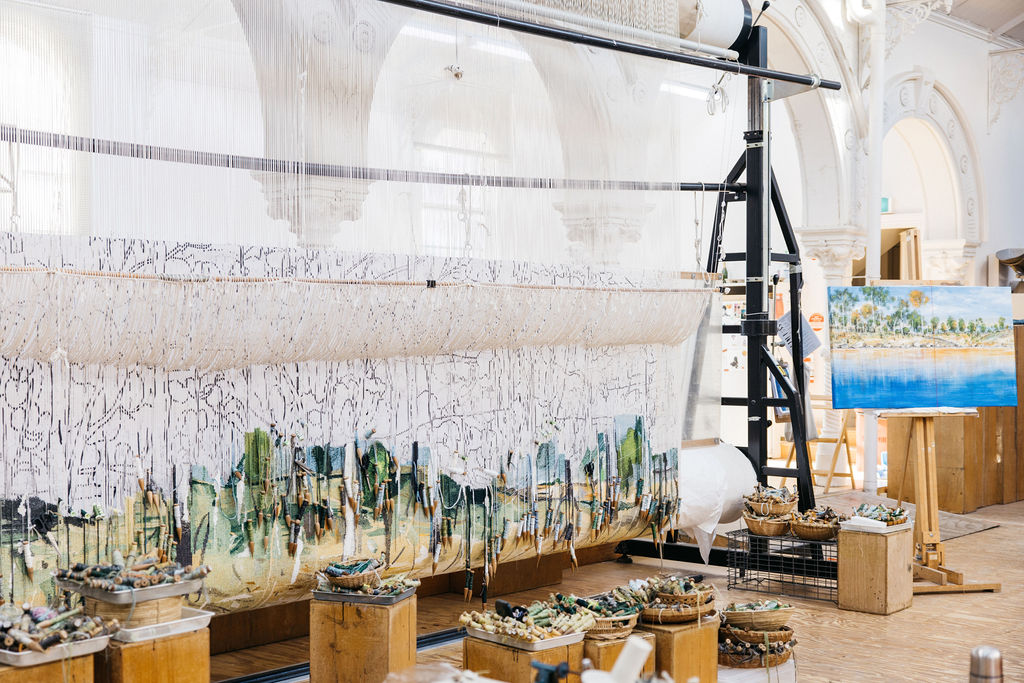
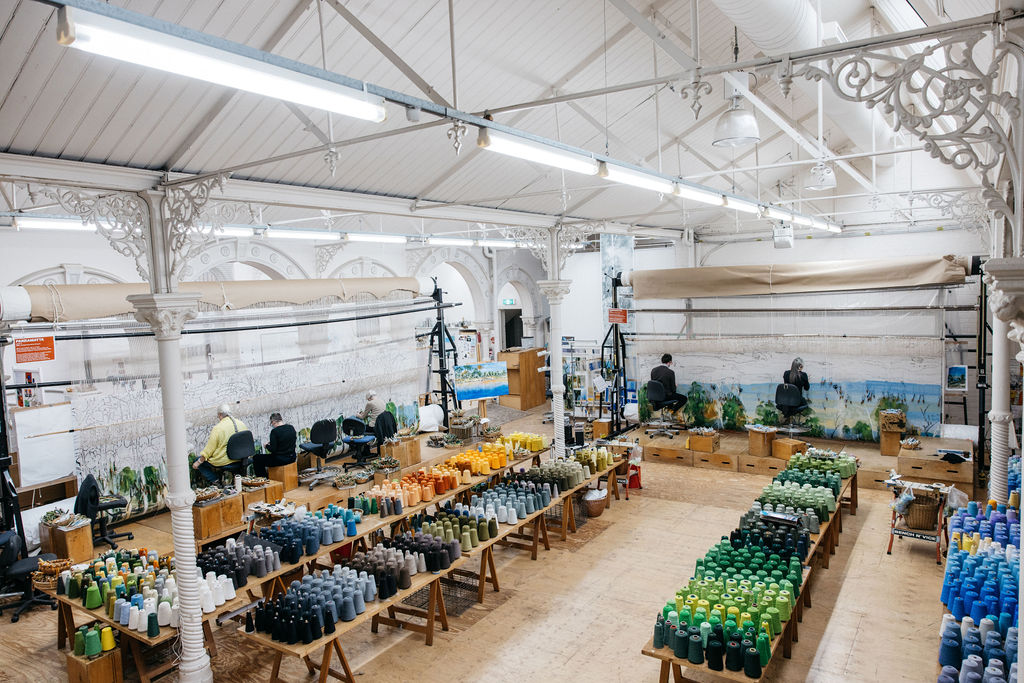

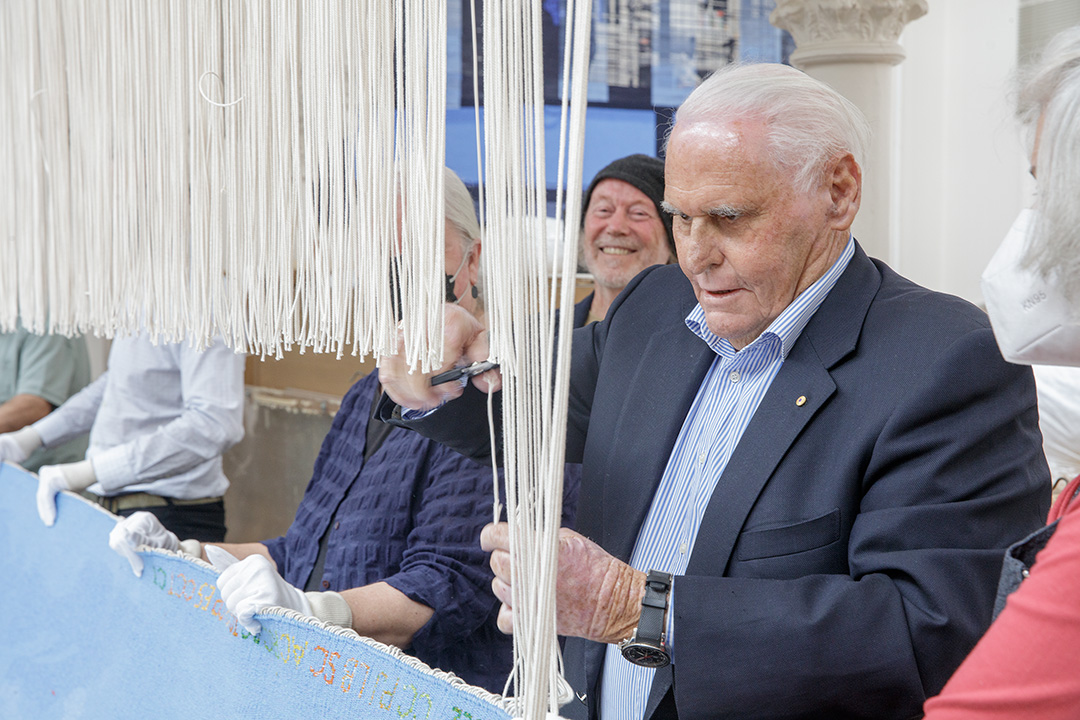
Spanning two looms the exceptionally large 'Parramatta' tapestry designed by Chris Kenyon has been commissioned as one of many new public artworks destined for the entrances of the new Parramatta Square building in Greater Western Sydney, built by Walker Corporation.
Kenyon is a New South Wales-based, impressionist landscape artist. He uses various painting media to depict nature and landscapes and extracts and dissects strong linear forms. Kenyon is also creating a sculpture of the 'Rose Hill Packet' for the main entrance in Parramatta Square. The 'Rose Hill Packet' was the first ship built by Europeans, designed to carry provisions up the Parramatta River from the fledging settlement of Sydney Cove. In creating his tapestry design, which will welcome visitors to the eastern entrance of the building, Kenyon painted what he imagined to be the viewpoint from the water — as if aboard the vessel — to the river shoreline.
Kenyon researched written descriptions of the region and the earliest sketches and watercolour paintings, done by various artists at the time, including George Raper. Raper, an officer on the first fleet, was an enthusiastic watercolourist, producing around 400 sketches and watercolours of the area. Kenyon writes: The realisation that this was a rich, luxuriantly wooded area made me determined to represent this lushness. I wished to create an atmosphere of golden freshness, with a luminous light reflecting the pure quality of the water, with the Blue Mountains in the background. The level, relatively flat landscape allowed light to penetrate, and so, this feeling of openness was also something I intended to capture.
Kenyon wanted to depict the mystery of the Blue Mountains and the possibility they held to early colonists as a subtle backdrop to the main elements of the landscape. The colonists would have seen the Blue Mountains as a barrier, although the Burramattagal people, the traditional owners of this Country, had traversed them for millennia.
'Parramatta' is the second-largest tapestry woven at the ATW after the Parliament House tapestry designed by Arthur Boyd AC OBE. The tapestry was constructed in two parts as its width is wider than the ATW’s broadest loom. One section is 6.3m wide using 1260 warp threads, and the other is 5.2m using 1040 warp threads. The two parts were joined during installation in Parramatta Square. Due to the four-metre viewing distance the tapestry is woven with a very course warp setting, using two warps per cm and 12 threads on the bobbin. Kenyon’s tapestry design was scaled up ten times, resulting in a 1cm area on the painting becoming a 10cm area on the tapestry. This level of upscaling results in a high level of abstraction of the design, with the capacity for creative interpretation.
Led by Chris Cochius and Pamela Joyce, a thirteen-person weaving team worked collaboratively on this project, with Cochius and Joyce maintaining consistency across the two looms, creating, as they gradually proceed, the strong shapes and high contrast of the landscape. Kenyon encouraged the weaving team to employ their expert knowledge and skills to realise his painting in tapestry form. He was keen for the black lines around the boulders and trees to soften, and the colours warmed up — and he and the weavers discussed creating a sense of depth between the foreground and mountains by making the tones graduate from light at the bottom to dark towards the top of the tapestry.
Commenced in May 2021, the tapestry took 18 months to complete and weighs over 200kgs.
Watch the making of this monumental tapestry here: